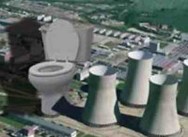
Refugee camps are future cities
The growing number of refugees flooding into camps worldwide could drastically redraw urban areas, it has been claimed. Most camps are largely off-grid, with fires and solar panels the main source of heat and power. In America Republicans have blocked asylum to war-torn Syrians, but around the world hundreds of thousands are arriving in need of shelter.
The camps they are building will become the cities of tomorrow, it has been claimed. An expert in humanitarian made the statement as it’s revealed the average amount of time people spend in the camps is a staggering 17 YEARS.
Kilian Kleinschmidt worked with the United Nations High Commission for Refugee s (UNHCR) for 25 years.
The former head of the Zaatari Refugee Camp in Northern Jordan says: “In the Middle East, we were building camps: storage facilities for people. But the refugees were building a city.”
“I think we have reached the dead end almost where the humanitarian agencies cannot cope with the crisis,” he said.
“These are the cities of tomorrow,” he continued. “The average stay today in a camp is 17 years. That’s a generation. Let’s look at these places as cities.”
The 53-year-old’s comments come at the end of a year which will be remembered for its vast refugee numbers, and the seeming unwillingness of host countries to offer them help.
The Zaatari camp which Kilian oversaw has now swollen to provide accommodation for 160,000 Syrians.
As such, it’s identified as the Jordan’s fifth largest city, with 6,000 people a day arriving after fleeing war against Bashar al-Assad’s dictatorship in Syria.
The overcrowded 2.8 square mile camp costs £700,000 a day to run.
There are no trees or bushes to provide shade on sun-baked land which was previously snake and scorpion-infested scrubland.
But there are football pitches, field hospitals, schools and a children’s playground aimed at keeping some 60,000 youngsters busy.
Every day some 12 to 15 babies are born at Zaatari.
Now running his own aid consultancy, Switxboard, Kilian says that far from being resisted, migrants should be used to boost the economy.
He names Germany, with 600,000 job vacancies and a need for tens of thousands of new apartments, as a country where this could be put into practice.
ASYLUM POLICY
In the aftermath of the Nov. 13 terror attacks in Paris, anxiety is understandable, said Bill Canny, executive director of the U.S. Conference of Catholic Bishops’ Office of Migration and Refugee Services. But governors and other politicians are not responding reasonably by calling for a “pause” or even the termination of efforts to resettle Syrian refugees in the United States. Refugees being selected for U.S. resettlement, he said, “are certainly not a credible threat by any way, shape, or means.”
“The people who are fleeing ISIS are fleeing for the same reasons that anyone flees,” he said. “They’re being bombed. They’re not being allowed to …
